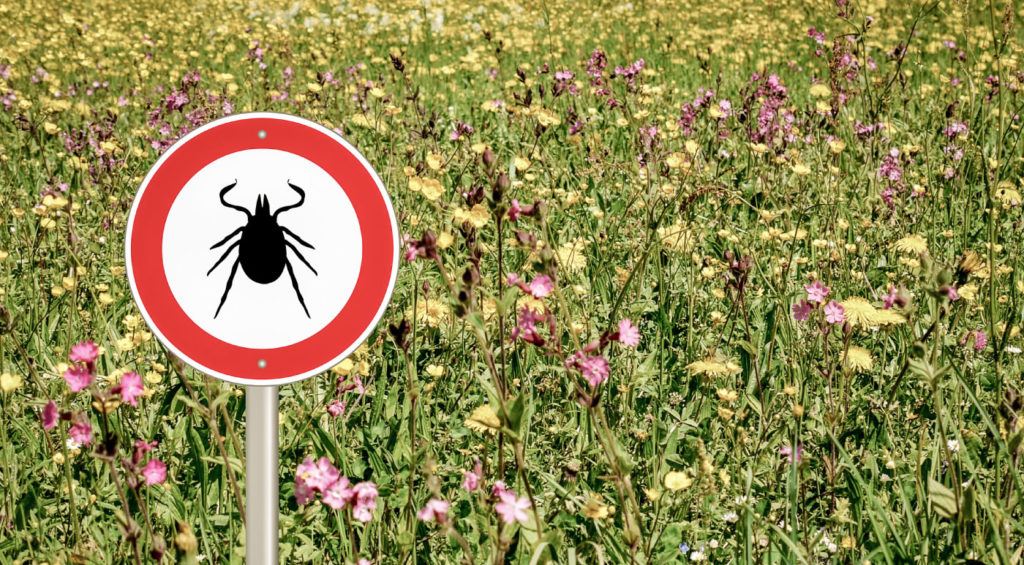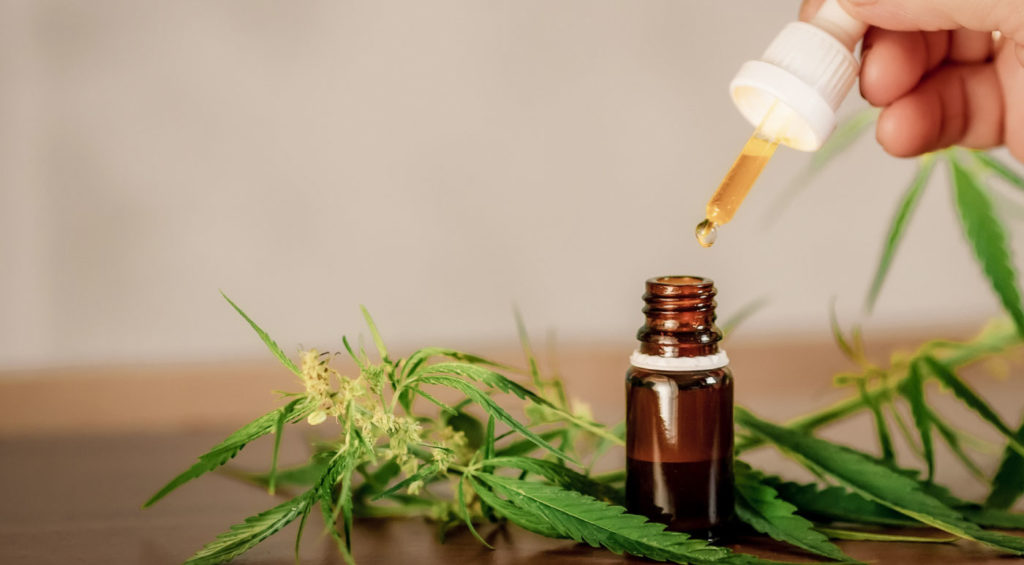
Imagine experiencing a mystery illness for months or years — stiff joints, fatigue, fevers, headaches. This is the reality for many people with Lyme disease as well as Post-Treatment Lyme Disease Syndrome (PTLDS). But is treatment in the form of CBD for Lyme Disease possible?
Lyme causes a plethora of symptoms. Often, it creates an unusual set of signs or symptoms which mimic other diseases like the flu, which makes it a challenge for doctors to recognize.
In many cases, it takes a long time before Lyme disease is diagnosed. This is due to imperfect testing techniques as well as the disbelief of the prevalence of the disease by some members of the medical community.
Although there are treatment approaches for Lyme disease, some people continue to have Lyme symptoms after treatment, referred to as PTLD, for which there are no approved treatments.
This leaves many people frustrated and hopeless. Many have no choice but to try to self-treat their symptoms and turn to alternative therapies. CBD has been shown to help with some of the symptoms that people with PTLDS experience.
Let’s look into the research behind CBD for Lyme and PTLDS.
Table of Contents
- CBD for Lyme: Just the Facts
- Understanding Lyme Disease
- Conventional Treatment for Lyme Disease
- CBD for Lyme Disease
- The Endocannabinoid System
- CBD and Anxiety
- CBD and Pain
- CBD and the Immune System
- CBD and the Neurological System
- CBD for Lyme and PTLDS: Summary
- Final Thoughts
CBD for Lyme: Just the Facts
Lyme disease is transmitted through deer tick bites and affects 300,000 people in the U.S. each year. Current treatments may help clear the infection. However, some people continue to experience symptoms post-treatment, referred to as Post-Treatment Lyme Disease Syndrome (PTLDS).
There are no approved treatments for PTLDS. Therefore, people are looking for alternative ways to manage their symptoms. CBD could potentially help with symptoms of Lyme and PTLDS. However, we need research on people who have these conditions to know for sure.
Understanding Lyme Disease
The CDC estimates that 300,000 people are diagnosed with Lyme disease each year in the U.S.A.
The bacteria Borrelia burgdorferi causes Lyme disease. It is most commonly transmitted through a deer tick bite. However, it is also possible to be transferred from a blood infusion, or to a baby from an infected pregnant mother.
Lyme disease is most common in the northeastern states. However, there have been cases of Lyme in all continental states. It is unclear whether these people were infected when traveling to the northeastern states, abroad, or in their home state.
Symptoms of Lyme Disease

The symptoms are typically non-specific and, in some cases, unusual. Odd neurological symptoms, wandering joint pain, brain fog, and anxiety are the keynotes of this condition. However, Lyme’s disease has many faces, and the symptoms can vary significantly from person to person. Symptoms tend to change with different stages of the disease.
The classic presentation is a bulls-eye rash, also known as erythema migrans rash, in the area of the tick bite. Over the next 3 to 30 days, common symptoms could include fever, chills, headache, fatigue, muscle and joint aches, and swollen lymph nodes.
Next, an infected individual may experience an array of different symptoms, such as:
- Severe headaches and neck stiffness
- Skin rashes
- Facial palsy
- Wandering joint pain and swollen joints
- Heart palpitations
- Dizziness or shortness of breath
- Inflammation in the brain
- Unusual neurological symptoms
- Nerve pain
- Shooting pains, numbness, or tingling in the hands or feet
Conventional Treatment for Lyme Disease
The traditional treatment for Lyme disease is antibiotic therapy. The CDC reports the majority of people who are diagnosed with Lyme disease and treated with antibiotics clear the infection.
Complications of Lyme Disease
Unfortunately, for some people, their experience of Lyme disease is not as simple as just taking antibiotics and clearing the infection.
Deer ticks also carry other bacteria, which can cause coinfections with Lyme. The Medical Leadership Board at Lymedisease.org reports that about 50% of people who get Lyme disease also have a coinfection. People who are infected with coinfections tend to also have a more severe illness with a longer recovery time.
Examples of coinfections include Babesia, Bartonella, and Rickettsia.
Also, some people continue to experience symptoms such as brain fog, fatigue, joint pain, and neurological symptoms, even after being treated with antibiotics for their Lyme disease. This is referred to as Post-Treatment Lyme Disease Syndrome (PTLDS).
Post-Treatment Lyme Disease Syndrome
The New England Journal of Medicine estimates that 10-20% of people who have Lyme disease develop PTLDS after treatment.
There are no treatments for PTLDS. The only course of action is symptom management. Symptoms of PTLDS are similar to Lyme disease and include:
- Fatigue
- Joint pain
- Anxiety
- Depression
- Insomnia
- Brain fog
- Memory issues
- Speech issues
- Swollen joints
Given that there are not any recommended treatments for PTLDS, people are left to fend for themselves to alleviate their symptoms. Could CBD be the answer for helping people with PTLDS?
Let’s take a more in-depth look into CBD for Lyme and PTLDS.
CBD for Lyme Disease

There have not been any research studies directly on CBD for Lyme or PTLDS. However, CBD has been shown to help with many of the symptoms of Lyme and PTLDS as well as modulate the immune system.
In order to understand how CBD may help with Lyme disease and PTLDS, we must first look into what CBD does in the body. CBD works primarily through stimulating the endocannabinoid system.
The Endocannabinoid System
Our bodies contain an endocannabinoid system, which is a system that modulates many functions of the body, including emotions, pain, inflammation, and more.
The endocannabinoid system is controlled by CB1, and CB2 receptors which, when stimulated, affect the way our immune system and central nervous system operates.
CB1 receptors are primarily in the central nervous system and are involved in memory, emotion, pain perception, and movement.
CB2 receptors are found primarily on immune cells, and they modulate the immune response and inflammation.
CBD has been found to affect both CB1 and CB2 receptors. It is through the activation of the endocannabinoid system that CBD works to help manage the symptoms of Lyme and PTLDS.
CBD and Anxiety
Multiple studies have found that CBD helps reduce anxiety, social anxiety, and depression — two common symptoms of Lyme’s disease and PTLDS. Clinical studies on CBD for anxiety have shown that CBD increases blood flow to the areas of the brain involved in emotional processing — the limbic and paralimbic regions.
If a person with Lyme or PTLDS is struggling with anxiety, CBD may help manage this symptom.
CBD and Pain

CBD has also been shown to help manage joint and muscle pain through its effect on the endocannabinoid system. Studies have shown it is helpful for many types of joint pain, including osteoarthritis and rheumatoid arthritis.
It helps with pain through the endocannabinoid which, when stimulated, decreases both inflammation as well as pain perception — two main factors of joint pain.
Theoretically, CBD may be useful for the joint and muscle pain people with Lyme and PTLDS experience. But, since there have not been studies on CBD for Lyme or PTLDS, we can’t say for sure.
CBD and the Immune System
There are CB2 receptors on immune cells such as B cells, T cells, natural killer cells, and macrophages. These are the cells of the immune system that help to fight off and clear infections. This shows that CBD has an immunomodulating effect. It is unclear whether this would hinder the clearance of a Lyme infection or help clear it.
Another consideration is that the immune system is responsible for creating inflammation. Given that CBD stimulates CB2 receptors which in turn decreases inflammation, CBD may have a place in reducing inflammation and the associated symptoms in PTLDS.
In summary, we need more research studies on humans studying CBD for Lyme and PTLDS.
CBD and the Neurological System
CB1 receptors are involved in decreasing inflammation of the brain. When stimulated, such as by CBD, the CB1 receptors decrease the release of inflammatory cytokines and decrease what’s known as excitotoxicity in the brain. Excitotoxicity refers to when the brain becomes overstimulated, which then causes damage to the brain structure.
Using animal models, scientists found that stimulation of CB2 receptors helps to decrease neuroinflammation — that is, inflammation of the brain.
Inflammation of the brain leads to neurological symptoms, which is a common symptom of Lyme and PTLDS. CBD may help with these symptoms. However, we can’t say for sure until we see clinical studies.
CBD for Lyme and PTLDS: Summary

There have not been any clinical trials on CBD for Lyme or PTLDS.
CBD has been shown to help with symptoms commonly experienced by Lyme and PTLDS patients such as anxiety, pain, immune activation, and inflammation, as well as neurological symptoms.
It is unclear whether CBD for Lyme of PTLDS is helpful until studies on Lyme and PTLDS are completed.
Final Thoughts
Lyme disease and Post-Treatment Lyme Disease Syndrome (PTLDS) can cause debilitating symptoms for those who are affected. Furthermore, there are no treatment options for PTLDS, aside from symptom management.
CBD has been studied for many of the symptoms of Lyme and PTLDS but has not been studied in Lyme and PTLDS patients specifically. The good news is, research shows that CBD helps manage pain, reduce anxiety, modulating the immune system, and protecting against brain inflammation.
Theoretically, there is the promise for CBD for Lyme disease and PTLDS. However, we do need more research to truly understand if CBD has a place in managing the symptoms of these conditions.
